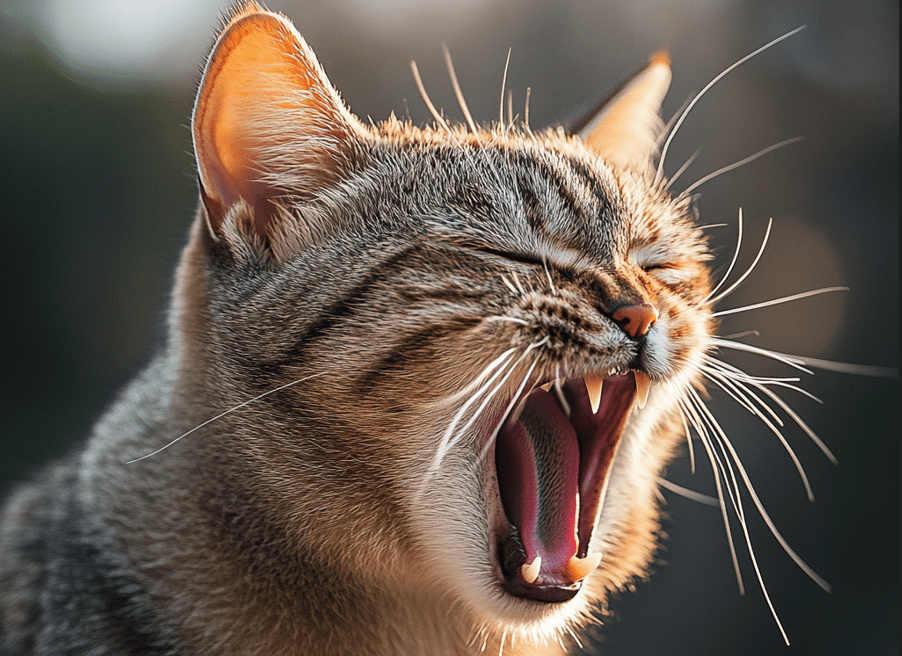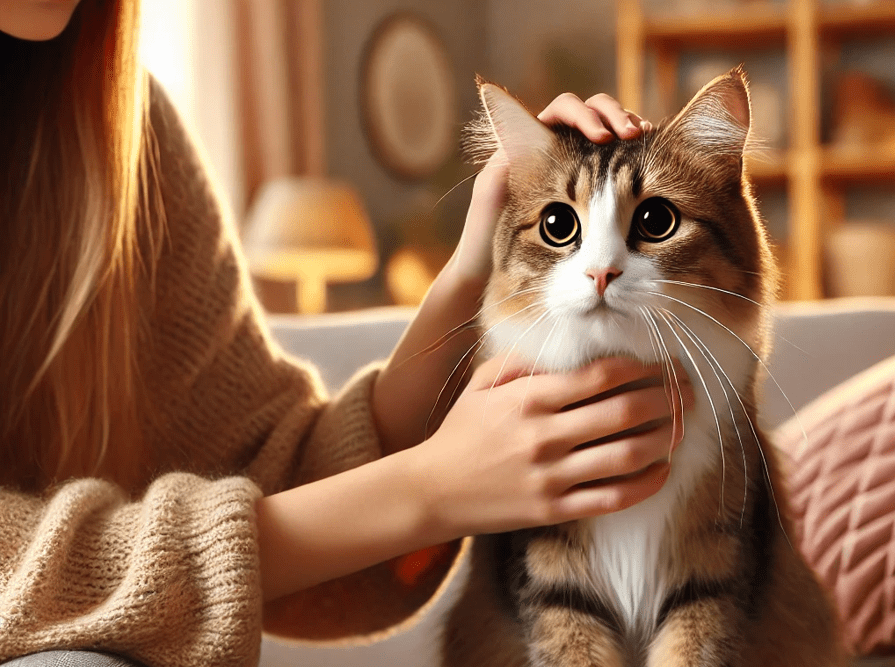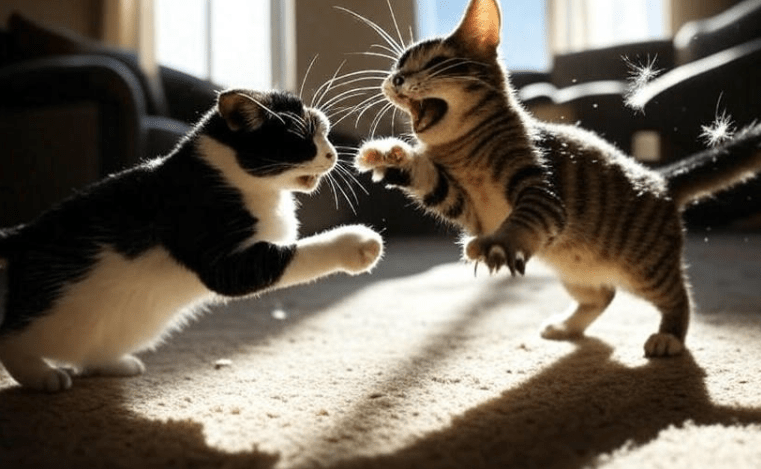
You’re sipping your morning coffee when suddenly—hiss, growl, a flying furball! Your cats are at it again, turning your peaceful home into a war zone. Cat fights aren’t just noisy; they can lead to injuries, stress, and long-term behavioral issues. But what if you could stop the chaos before it starts?
Understanding cat aggression management techniques is the key to transforming hostile hisses into peaceful coexistence. Whether your cats are territorial, fearful, or just overly playful, this guide will help you decode their behavior and implement strategies to keep the peace.
What This Guide Will Teach You: A Roadmap to Feline Harmony
By the time you finish reading, you’ll have a complete toolkit for managing even the most persistent cat conflicts. Here’s what we’ll cover in detail:
The complex psychology behind cat fights – We’ll explore the evolutionary instincts and emotional triggers that turn playful pounces into serious aggression, helping you see fights from your cat’s perspective.
The 5 main types of feline aggression – From territorial disputes to pain-induced attacks, you’ll learn to identify exactly what’s fueling your cats’ conflicts for more targeted solutions.
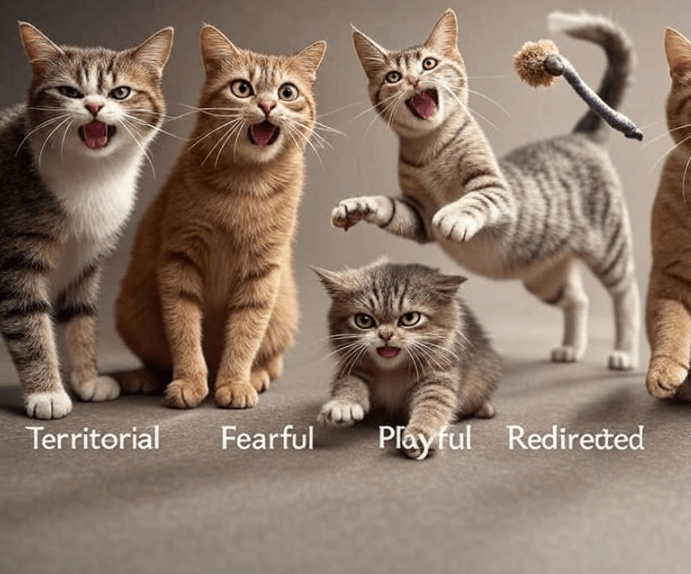
Reading the subtle language of aggression – Cats communicate volumes through body language. We’ll break down the nuanced signs—from ear positions to tail movements—that signal an impending fight.
Step-by-step aggression management techniques – Go beyond basic advice with proven methods like controlled reintroduction, environmental modification, and positive reinforcement training.
When professional intervention is needed – Learn how to recognize when aggression stems from medical issues or requires expert behavioral intervention.
Real-world success strategies – Through detailed case studies, you’ll see how these techniques transform even the most hostile feline relationships.
Whether you’re dealing with occasional spats or daily battles, this guide will give you the knowledge and confidence to create a calmer home. Let’s begin by understanding why your cats are fighting in the first place.
Why Do Cats Fight? Decoding the Roots of Feline Aggression
To effectively manage aggression, we must first understand its origins. Unlike humans, cats don’t fight out of malice—their behavior is driven by instinct, fear, or miscommunication. Here’s a deep dive into the most common causes:
1.Territorial Aggression: Defending Their Domain

Cats are inherently territorial creatures, a trait rooted in their wild ancestors’ need to protect resources. In multi-cat households, the introduction of a new pet—or even changes in routine—can trigger defensive aggression.
What it looks like:
1.A resident cat blocking access to food bowls, litter boxes, or favorite sleeping spots
2.Stalking or ambushing the “intruder” cat
3.Urine marking or excessive scratching to reinforce boundaries
Why it happens:
Territorial disputes often escalate when cats feel their resources are threatened. Unlike dogs, cats don’t have a strong pack mentality, making cohabitation a negotiated truce rather than a natural state.
2.Fear-Based Aggression: When Panic Triggers Attack
A frightened cat is a dangerous cat. When felines feel trapped or threatened, their instinct is to lash out—even at trusted owners.

Common triggers include:
- Sudden loud noises (thunder, vacuums)
- Unfamiliar people or animals
- Negative past experiences (abuse, traumatic vet visits)
Behavioral signs:
- Crouched posture with ears flattened
- Dilated pupils and puffed-up fur
- Defensive hissing or growling that escalates to swiping if the threat persists
Key insight: Fearful aggression often worsens if the cat learns that aggressive displays successfully remove the threat (e.g., a guest backing away). This reinforces the behavior.
3.Play Aggression: When Roughhousing Goes Too Far
Kittens explore the world through play-fighting, but without proper guidance, these behaviors can become problematic in adulthood.
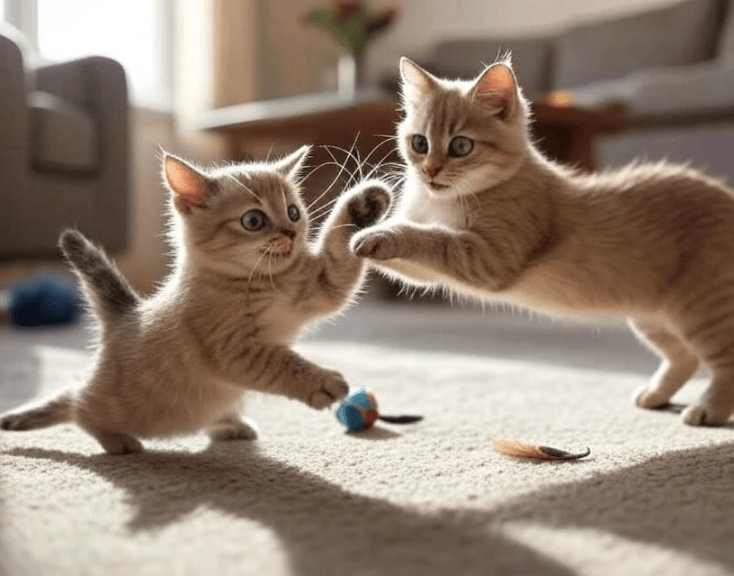
Typical scenarios:
- A young cat ambushing ankles or hands during movement
- Overly vigorous chasing that leaves the other cat distressed
- Biting that breaks skin (indicating poor bite inhibition)
Why it matters:
While play aggression starts innocently, it can teach cats that attacking moving objects (including human body parts) is acceptable. Early intervention is crucial.
4.Redirected Aggression: The Dangerous Misdirection
One of the most confusing—and dangerous—types of feline aggression occurs when a cat can’t reach the actual source of their frustration and takes it out on a nearby target.
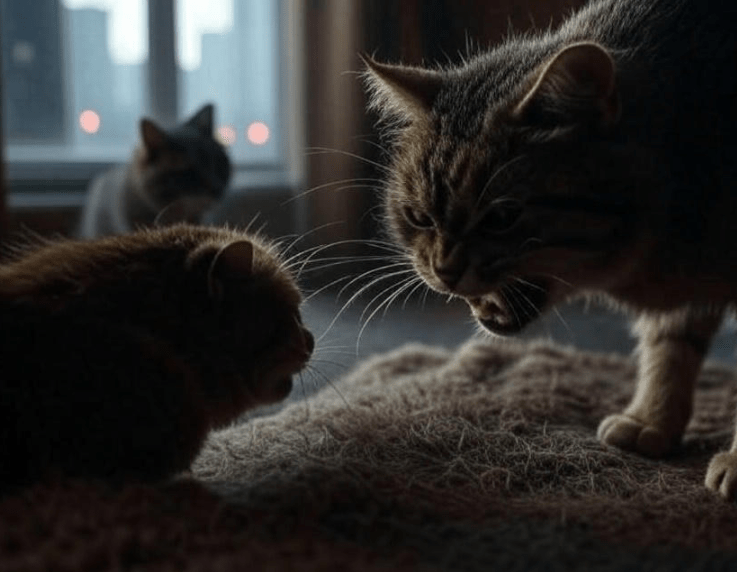
Classic example:
- Your indoor cat spots an unfamiliar stray through the window
- Unable to confront the intruder, they suddenly attack their feline housemate
Why it’s tricky:
These outbursts seem to come “out of nowhere” from a human perspective, often leaving owners baffled. The attacked cat may then develop defensive aggression, creating a vicious cycle.
5.Pain-Induced Aggression: When Hurt Leads to Hostility
A normally affectionate cat that becomes aggressive may be suffering silently. Medical issues often manifest as behavioral changes.
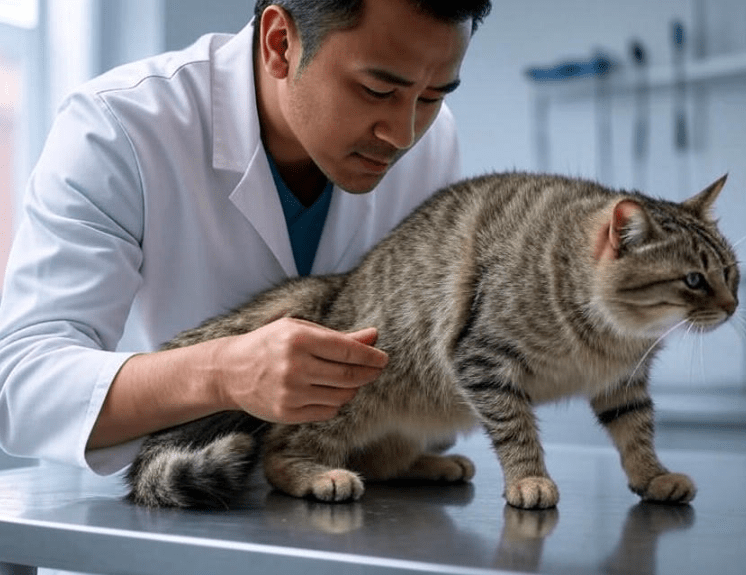
Common culprits:
- Dental disease (broken teeth, gum inflammation)
- Arthritis or joint pain
- Internal discomfort (UTIs, digestive issues)
Red flags:
- Aggression when touched in specific areas
- Increased irritability paired with changes in eating or litter box habits
- Excessive grooming of one body part
Critical step: Any sudden onset of aggression warrants a veterinary exam to rule out underlying health problems before behavioral interventions.
Reading Feline Body Language: The Silent Signs of Impending Conflict
Cats communicate their emotional state through subtle physical cues. Learning this “language” allows you to intervene before a spat erupts.
Defensive Postures: “I Feel Threatened”
Ears: Flattened sideways or backward (like airplane wings)
Eyes: Wide pupils indicating adrenaline surge
Body: Crouched low to ground, possibly with arched back to appear larger
Tail: Tucked tightly or puffed up
Vocalizations: Low growls transitioning to hisses if pressure continues
Offensive Postures: “I’m Ready to Attack”
Ears: Forward-facing but tense, with slight backward rotation
Eyes: Intense stare with constricted pupils (focusing on target)
Body: Stiff, weight shifted forward for lunging
Tail: Held straight with twitching tip (different from playful wagging)
Vocalizations: Deep, rhythmic growls preceding a charge
The Freeze: The Most Overlooked Warning Sign
Before attacking, cats often enter a motionless stare. This brief pause is your last chance to safely intervene by:
- Creating a distraction (tossing a pillow nearby)
- Placing a physical barrier (a large cushion or piece of cardboard)
- Gently separating cats if possible without using your hands
Advanced Aggression Management Techniques: A Step-by-Step Approach
Now that you understand the “why” behind aggression, let’s explore proven solutions. These methods require patience but yield lasting results when applied consistently.
1.Separation and Controlled Reintroduction
For severe aggression, a reset period is essential.

Detailed protocol:
Isolate the aggressor (or both cats) in separate rooms with all necessities (litter, food, toys).
Scent swapping: Rub a towel on one cat’s cheeks (where friendly pheromones are released) and place it near the other cat’s food bowl.
Site swapping: After 2-3 days, let the cats explore each other’s territories while the other is confined, building positive associations.
Barrier feeding: Place food bowls on either side of a closed door, gradually moving them closer as cats eat calmly.
Supervised visual access: Use a baby gate or screen door for short, controlled face-to-face meetings, rewarding calm behavior with high-value treats.
Expected timeline:
Mild cases: 1-2 weeks
Severe aggression: 4-8 weeks
2.Environmental Enrichment: Reducing Competition
Stress often stems from resource competition. Modify your home to minimize conflict triggers.
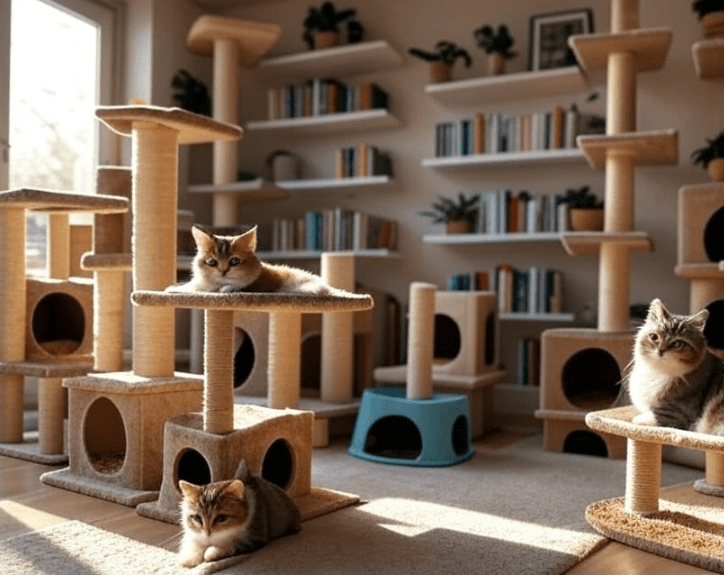
Key modifications:
Litter boxes: Provide N+1 boxes (number of cats plus one extra), placed in quiet, separate locations.
Vertical territory: Install cat trees, wall shelves, or window perches to create escape routes and observation posts.
Feeding stations: Separate food and water bowls in low-traffic areas to prevent guarding behavior.
Private retreats: Offer enclosed beds or cardboard hideaways where cats can retreat when overwhelmed.
Pro tip: Use Feliway Multicat diffusers, which release calming pheromones mimicking those produced when cats rub their cheeks on surfaces.
3.Behavior Modification Through Positive Reinforcement
Reward-based training reshapes how cats perceive each other.
Effective techniques:
Parallel play: Engage both cats in interactive play (wand toys, laser pointers) at a safe distance, gradually decreasing the space between them as tolerance improves.
Joint treat sessions: Feed high-value treats (chicken, tuna) simultaneously while the cats are in each other’s presence, creating positive associations.
Clicker training: Teach simple commands like “sit” or “look” to redirect focus during tense moments.
Critical nuance: Never punish aggression—this increases stress and worsens conflict. Instead, reward calm, non-reactive behavior.
4.Managing Redirected Aggression
When overstimulation leads to misplaced attacks:
Identify triggers: Note if aggression follows outdoor cat sightings, loud noises, etc.
Block visual access: Use opaque window film to prevent outdoor cat sightings.
Create distraction plans: Keep interactive toys handy to redirect energy before aggression escalates.
When to Seek Professional Help
While many cases resolve with consistent training, these signs warrant expert intervention:
Sudden aggression in a normally placid cat (may indicate neurological or pain issues)
Injuries requiring veterinary care (bite abscesses, deep scratches)
No improvement after 4+ weeks of consistent behavior modification
Aggression paired with other symptoms (vomiting, lethargy, inappropriate elimination)
Professional options:
Veterinarian: Rules out medical causes and may prescribe anti-anxiety medications for severe cases.
Certified Feline Behavior Consultant (IAABC): Creates customized behavior plans for complex cases.
Transforming a Turbulent Household
Background: Two rescued siblings, Leo and Mia, began fighting violently at maturity despite early bonding.

Interventions:
Full separation for two weeks with daily scent swapping.
Barrier feeding with grilled chicken rewards for calm behavior.
Vertical space expansion with wall-mounted walkways.
Scheduled play sessions to release pent-up energy.
Outcome: After six weeks, the cats resumed co-sleeping and mutual grooming. Occasional hisses still occur but no physical fights in eight months.
Final Thoughts
Managing feline aggression is a journey, not a quick fix. By understanding the root causes, recognizing early warning signs, and implementing these aggression management techniques consistently, you can transform a tense household into a harmonious haven.
Remember:
Progress is incremental – Celebrate small victories like peaceful mealtimes or shared sunbathing spots.
Environment is key – A well-structured space prevents many conflicts before they start.
Professional help is strength – There’s no shame in seeking expert guidance for persistent issues.


